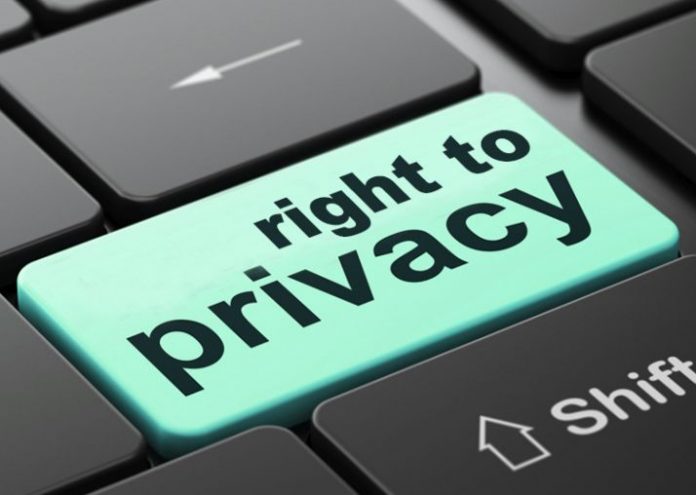This article is written by Oishiki Bansal of Symbiosis Law School, Noida. This article delves into the surveillance laws of India and whether the installation of cameras infringes the Right to Privacy of the prisoners under Article 21 of the Constitution.
Table of Contents
Introduction
The Constitution of India has instilled various fundamental rights for citizens to live a more dignified life. The Right of Privacy was upheld by the Supreme Court in the case of Justice K.S. Puttaswamy (Retd) vs. Union of India (2018) and has now been granted as a fundamental right under Article 21 of the Constitution. The judgment (Shri Dilip K. Basu vs State Of West Bengal, 2015) given by the Supreme Court for installing security cameras in prisons and police stations two years before the Puttaswamy judgment has raised questions about the infringement of the Right to Privacy under the Right to Personal Liberty and Personal Life. Protests by various prisoners have led to a reconsideration of the recommendation given by the Apex Court of India.
The surveillance law of India
Surveillance laws in India are governed by the Telegraph Act 1885 and the Information Technology Act 2000. While the Telegraph Act covers the inception of calls, the Information Technology Act covers the inception of data, making it the principle legislation.
Provisions for surveillance under the InformationTechnology Act:
- Section 66 (e) of the IT Act 2000, throws light on video surveillance. This Section specifies the offense of willfully, knowingly, or intentionally transmitting an image or video of the private area of any person without their consent is a violation of the Right to Privacy.
- Section 69 of the IT Act 2000 and Rule 3 of the Information Technology (Procedure & Safeguards for Interception, Monitoring & Decryption of Information) Rules, 2009 provide that except for the central government, state government, or any competent authority who has received directions from the government, no one can intercept or decrypt any information transmitted, generated, received, or stored on any computer resource. The following authorities can use their powers only in certain conditions, such as:
- When there is a threat to national security;
- A threat to national integrity;
- For state security;
- Maintaining cordial relations with foreign nations;
- In the interest of public order; and
- To prevent any further commission of an offense.
- For monitoring the use of video surveillance in India and protecting the Right to Privacy an expert committee was formed under the chairmanship of Justice AP Shah. The guidelines outlined by the AP Shah Committee Report were as follows –
- A proper notice should be provided by the data controller to all the individuals whose information is to be stored explaining the practice of information collection in a very concise, simple and easy to understand language.
- After giving proper notice the individual should be given a choice to opt-out or opt-in for the information collection. The data controller can store, process, share or use the data only when an individual has agreed for the same. One way of getting consent is through informing the individuals that they are under CCTV surveillance.
- The data so collected should be limited to the objective as stated in the notice and no information beyond what is consented shall be collected.
- The data collected should be deleted except under certain circumstances after the dissemination of data for the required purpose.
- A governing authority should be established for grievance redressal and implementation of all the guidelines provided.
- Security cameras surveillance laws should cover both internal and external video surveillance and surveillance in both the public and private spheres.
Installation of cameras in the prisons
While reviewing the landmark case of DK Basu v. State of West Bengal (1996), which gave steps to uplift the treatment of prisoners in the prison as well as a police station, the Supreme Court gave guidelines that included the installation of CCTV cameras in the prison and police station for better regulation and governing of prison and police station activities.
The Court while issuing the guidelines put forward the issue of violence and human right abuse, to minimise, if not prevent, custodial violence, suicides, maintaining proper discipline, keeping a check on drug consumption in prisons, etc. as the reason for the installation of security cameras. Previously, the prisons and police stations were equipped with security cameras in the common areas such as the entrance, mess area, or exterior walls to ensure that no prisoner escapes from the jail.
The Court also stated that the guideline is issued while considering most of the state’s reports and recommendations to install CCTVs in the prisons. The judgment further stated that states like Bihar, Tamil Nadu, Haryana, and Union Territories like Andaman and Nicobar islands have already started installing security cameras in police stations and prisons. The Court ordered the states to implement the recommendations within one year of the date of order, also it further stated that the recommendation has been given to ensure better discipline in the prison environment and control activities of violence and human abuse.
However, the installation of cameras has presented issues with the Right to Privacy given to the citizens after the Puttaswamy case. There have been many incidents where the prison inmates have shown resistance towards security cameras in the jails. The women prisoners in Byculla had to go on a hunger strike protesting against the installation of CCTVs in the changing areas. They expressed their concerns relating to the invasion of their privacy while changing and being a medium of fulfilling the lewd interests of the officers who will monitor the cameras installed.
There are instances of covering up of crime, like, where some prisoners escaped from the jail and the authority claimed that they have no footage of the escapade due to malfunctioning of cameras. Later, it was found that some of the police officers were involved in helping the prisoners escape and that had raised questions over the utility of the cameras in the prison barracks.
In some cases, it has been seen that the installation of CCTV has been advantageous to the violent prison inmates and a source to oppress the non-violent ones.
At present, the debate is whether the Supreme Court’s judgment is still valid or it breaches the Right to Privacy as instilled in Article 21 of the Constitution.
What does Article 21 impart in this regard
The question of whether Article 21 of the Indian Constitution includes the Right to Privacy was first raised in the case of M.P Sharma v. Satish Chandra (1954), where an 8-judge bench agreed that the Right to Privacy is not enshrined in our Constitution as a fundamental right. Further, in the case of Kharak Singh v. State of Uttar Pradesh (1964) the Right to Privacy was made as an alien concept. The seven-judge bench was formed to decide whether the Right to Privacy falls under the “personal liberty” clause of Article 21 or not. While two judges were in favor that Article 21 includes the Right to Privacy the others dissented. After a few years, the Supreme Court while balancing the Right to Privacy and the Right to Speech and Expression in the case of R. Rajagopal v. State of Tamil Nadu (1994) stated that the Right to Privacy is implicit under Article 21 as a right to be alone. Although, the ambit as to what comes under the Right to Privacy was unclear and the vagueness in that area led to more questions. With time as more cases were presented in front of the Supreme Court the area of the Right to Privacy as guaranteed under the Right to Personal Liberty and Right to Life got defined. Right to privacy of medical records, tapping of calls, search and seizure by revenue authorities, privacy for sexual identities, etc.
Over the years the Right to Privacy has been an issue of discussion. In the case of Maneka Gandhi v. Union of India (1978) the Court interpreted the ambit of Article 21 in a wider sense and prescribed that the Right of Personal Liberty and Right to Life includes all the rights under ‘natural law’. Finally, in the landmark case of K.S Puttaswamy v. Union of India, the Court came to a conclusion that the Right to Privacy is enshrined under the Right to Personal Liberty and the Right to Life. Although the judgment was a result of the petition filed by Justice K.S. Puttaswamy in 2012 challenged the biometric system scheme linked to aadhaar; it led to one of the most important judgments of the Apex Court. Not only Article 21 but Article 14 (Right to Equality) and Article 19 (Right to Freedom) of the Constitution instill the Right to Privacy as a fundamental right.
Does installing CCTV in the prison violate Article 21
In the case of K.S Puttaswamy v. Union of India, the Court established three tests that must be met by a measure that violates privacy in order for it to be valid:
- The violation should be done by the authority of law.
- There should be a legitimate primary objective for the violation.
- The violation must be both necessary and proportional to the goal at hand.
The recommendation to install security cameras in the prison and police station is itself given by the Apex Court in D.K. Basu, the first test as to violation done by the authority by law is justified. The Court gave the guideline with a primary objective of controlling the human abuse, suicide, custodial deaths, to discipline the prison inmates and prevent other prevailing crimes in the jails also tries to justify the second test that needs to be fulfilled. However, more than disciplining the inmates, the installation of CCTVs in the prison has given rise to other problems. As for the third test, the violation must be both necessary and proportional to the goal at hand. There is no proper justification as to why security cameras are the only necessary, proportional, and direct solution to the problem of human abuse and custodial deaths in prison. Other means such as stricter rules and regulations, more effective implementation of the already existing rules and regulations can be used to find solutions to the problem.
As it is said, “Inmates in prison are still citizens and should not be denied their basic human rights as any other citizens.” Access to fundamental rights for all citizens should be ensured. If the installation of security cameras can be invasive of the privacy of a citizen then why doesn’t the same principle apply to the prisoners? If the installation of security cameras at highways or other public places can make society an Orwellian state then why does installing CCTVs in the barracks and cells of prison to monitor the prisoners 24X7 doesn’t come under the Orwellian society.
The installation of CCTVs in the prison does not qualify the test provided in the case of KS Puttaswamy. Although the law was given by a legal authority, there was no legitimate and primary objective for the violation of the law. Also, the violation was not necessary and proportional to the goal at hand. The Right to Privacy is guaranteed under Part III of the Indian Constitution as a fundamental right and installing security cameras in the cells of prisons violates the basic principle of Article 21.
Conclusion
After the Supreme Court’s ruling making the Right of Privacy a fundamental right, the guidelines provided by the Apex Court in 2015 are violative of the fundamental rights of prisoners. The 24X7 monitoring of the prison inmates and collecting their information without asking for consent is an infringement of Article 21. Many convicts have protested against the placement of cameras in prisons, while prisoners with a history of violence have benefited from this in some way. Even if technology makes our life easier, that doesn’t imply there aren’t some flaws. Every security camera has a blind spot that can be discovered. Therefore, better and more effective steps could be taken to prevent violence, human abuse, custodial death, and other prevailing crimes for better prison reforms.
References
- https://www.google.co.in/amp/s/rmlnlulawreview.com/2020/08/01/no-privacy-for-prisoners-in-india/amp/
- https://www.google.co.in/amp/s/www.thehindu.com/news/national/what-are-the-surveillance-laws-in-india/Article29993602.ece/amp/
- https://lawtimesjournal.in/privacy-as-a-fundamental-right/
- https://www.dailyo.in/politics/cctv-solution-crime-indian-prisons-smriti-irani-fabindia-jail-torture-atrocity-human-rights/story/1/3606.html
- https://www.mondaq.com/india/it-and-internet/891738/cyber-crimes-under-the-ipc-and-it-act–an-uneasy-co-existence
Students of Lawsikho courses regularly produce writing assignments and work on practical exercises as a part of their coursework and develop themselves in real-life practical skills.
LawSikho has created a telegram group for exchanging legal knowledge, referrals, and various opportunities. You can click on this link and join:
https://t.me/joinchat/J_0YrBa4IBSHdpuTfQO_sA
Follow us on Instagram and subscribe to our YouTube channel for more amazing legal content.
 Serato DJ Crack 2025Serato DJ PRO Crack
Serato DJ Crack 2025Serato DJ PRO Crack











 Allow notifications
Allow notifications



